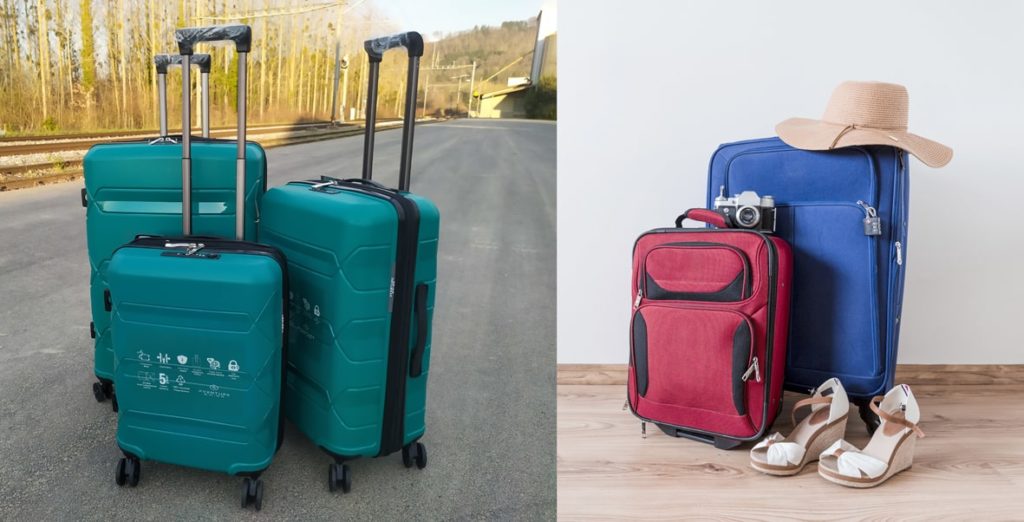When buying your new travel luggage, you need to consider various factors. It’s not just about the size, the capacity, the number of wheels or the TSA-regulated lock. You also need to choose what your suitcase will look like. You must decide whether you want to take soft or hard luggage, depending on the needs of your future trip.
Soft Suitcase
Obviously, soft case suitcases offer great flexibility. The casing is not stiff, so it is easier to squeeze into tight spaces. To add to their flexibility, the majority of these types of suitcases are able to expand to allow for even more storage capacity. Their flexibility makes them durable in a different way than their rigid counterparts. This luggage won’t give in to the pressure of being thrown on conveyor belts as it can withstand many bumps and bruises from travel.
These travel bags can also be well protected with anti-slip pads and corner protectors.
The interior of these suitcases is made up of pockets or special dividers to store items that you may need to pack to meet your travel needs.
Finally, these suitcases also tend to be lightweight due to the fabric used in their manufacture such as nylon, polyester, etc. These materials are considerably lighter than the plastic needed to make a hard case. But it also depends on the structure of the suitcase. The variables depend on the frame, hardware and accessories included in that particular type of luggage.
Advantages of a soft suitcase
- Flexible, easy to maneuver and lightweight.
- Easier to store in overhead compartments of airplanes, cars, trains and buses due to flexibility and ability to transform to fit odd shaped spaces.
Disadvantages
- They are less resistant to water and humidity than rigid suitcases. Nevertheless, they will resist a little bit to rain. The contents of the bag will be slightly damp.
- Difficult to clean and wash.
- Valuables or breakable items are not as well protected in soft-sided luggage due to their flexibility and the fact that you can fit them into compartments more easily than hard-sided luggage.
Rigid Suitcase
Hardside luggage can be made from a variety of materials, including ABS plastic (less durable), polypropylene, or very resistante polycarbonate.
In many respects, their characteristics are no different from those of soft suitcases – quite light, durable, designed for simple organization. One of the reasons travelers buy hardside luggage is for aesthetics. Indeed, rigid suitcases are available in a wide variety of colors and textured patterns. Their surfaces can have a glossy or matte finish. Some hard luggage really stands out, which can determine a traveler’s personality and also make it easier to retrieve baggage from the arrival tarmac.
Your belongings are much more protected in a hard case because they don’t flex as much.
Advantages of a hard suitcase
- More sturdy and durable hard shell. They are not likely to break, tear or come apart.
- Hard luggage also trumps soft luggage when it comes to protection of valuables and resistance to water and moisture. There are many models that are waterproof to everything.
Disadvantages
- A hard case doesn’t allow for « tightening », making it more difficult to store in the luggage compartments of cars, buses and planes.
- The hull is very robust and unbreakable but on the other hand it is scratchable. Indeed, after several plane trips, you will see the appearance of scratches due to friction with other suitcases.
Of course, your choice of luggage depends on your personal preferences and travel requirements. What you choose should match your budget, your style, and the reason you’re traveling, whether it’s for business or pleasure.
If you lack inspiration, don’t hesitate to take a look at our lists of essential things to take with you.



